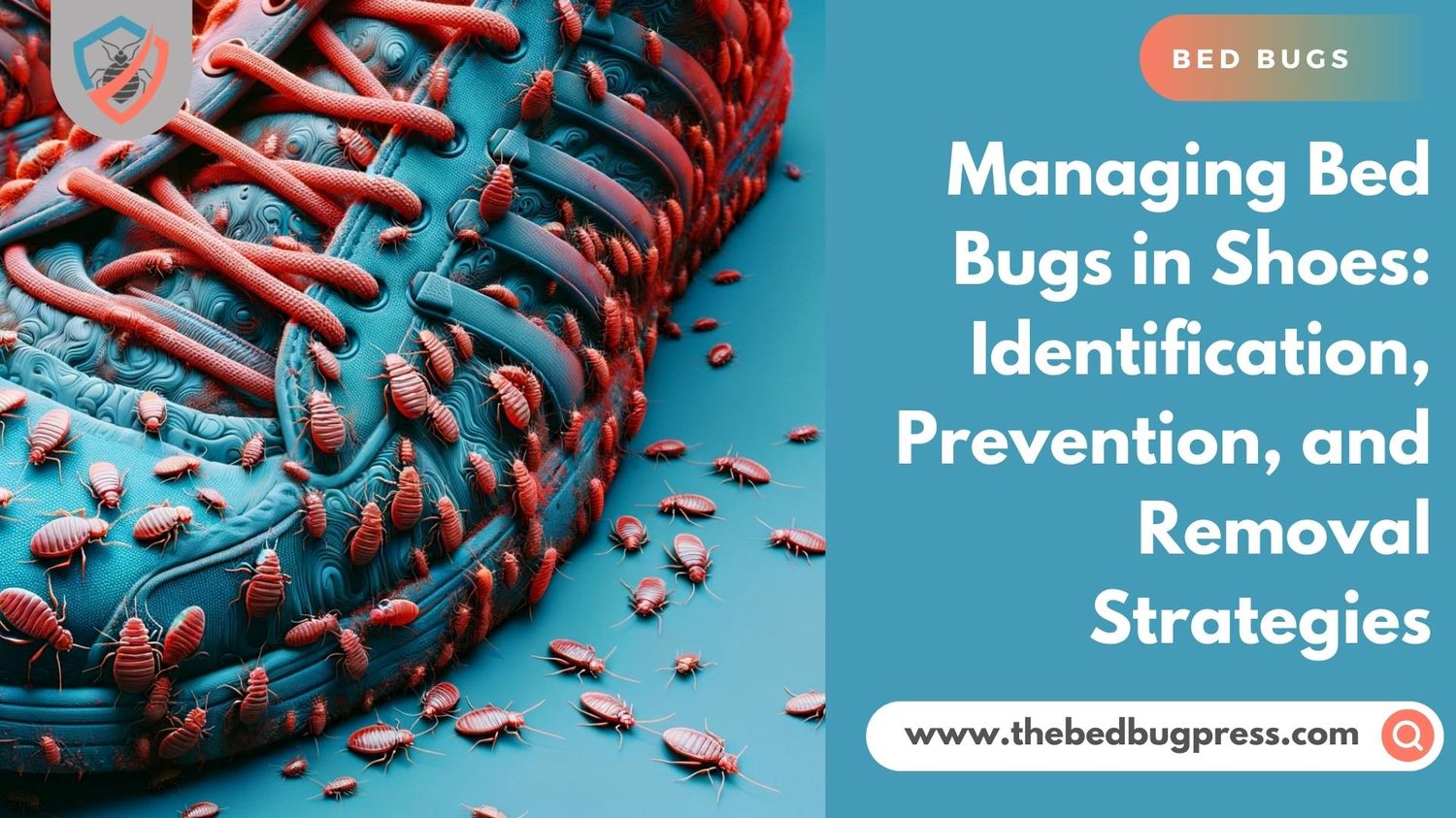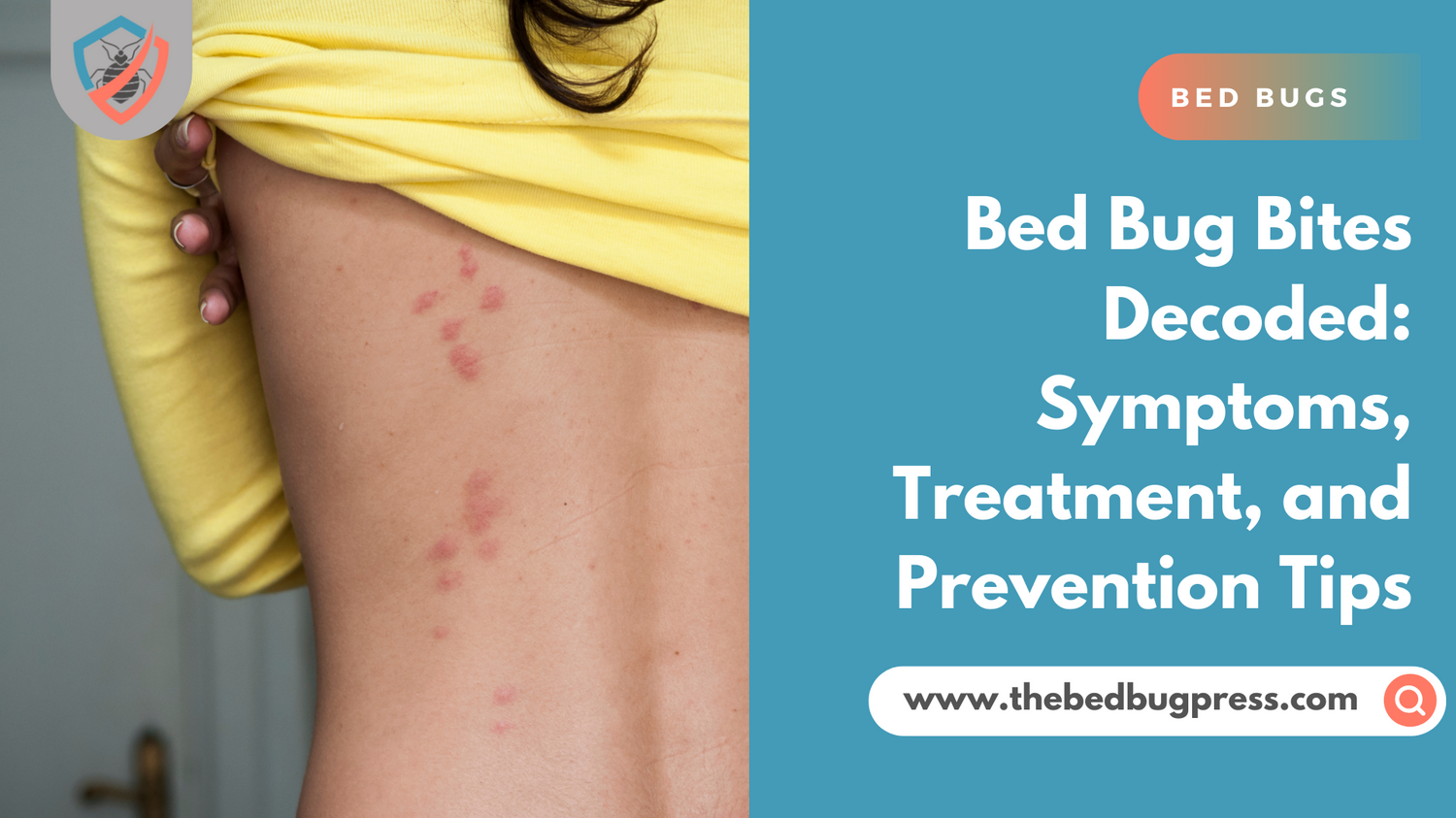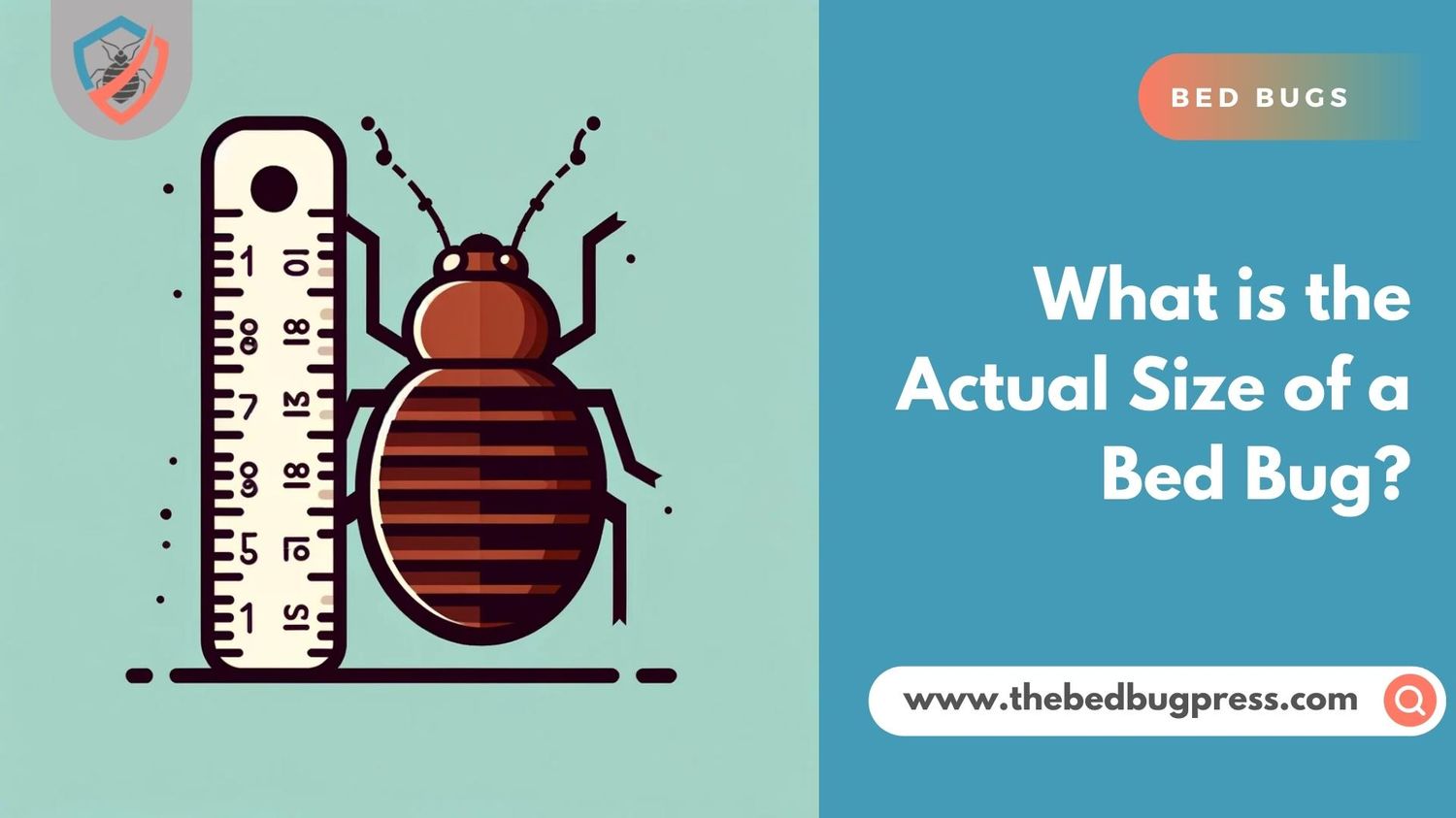The presence of bed bugs in shoes can pose a significant challenge, as these pests can easily hide and spread in footwear. Identifying their presence can be difficult, but signs to look out for include reddish bites, a musky odor, feces, and eggs.
Removing bed bugs from shoes can be accomplished through heat, cold temperatures, or non-toxic powders. However, if you found bed bugs on your shoes, I would be careful to check around the house and see if you find the presence of bed bugs anywhere else. You want to attack a bed bug infestation earlier than later.
This article will explore various methods for identifying, removing, and preventing bed bugs in shoes, along with additional considerations and tips for addressing this issue.
Key Takeaways
- Bed bugs can easily get into shoes, especially fabric shoes or shoes with laces or seams.
- To identify bed bugs in shoes, look for reddish bites around your ankles, a musky odor, feces, blood stains, or bed bug eggs.
- There are several methods to remove bed bugs from shoes, including using heat or cold temperatures and using diatomaceous earth.
- It is important to treat both your shoes and your home to effectively get rid of bed bugs.
A Bed Bug in Shoes: Understanding the Problem
How Bed Bugs Get into Shoes
Bed bugs can easily find their way into shoes through various means. They are attracted to body heat and new hosts, making crowded public places like subways, concerts, stores, and office spaces prime areas for picking up bed bugs. Contact with a person who has a bed bug infestation or visiting a home or hotel infested with bed bugs can also transfer the bugs to your shoes. Bed bugs are more likely to cling to fabric shoes or attach to laces or seams on leather shoes. To better understand how bed bugs get into shoes, refer to the table below:
Means of EntryDescriptionHitchhikingBed bugs can latch onto shoes when in contact with infested areas or objectsCrawlingBed bugs can crawl into shoes through openings or cracksHiding in Dark SpacesShoes provide a dark and secluded environment for bed bugs to hideClinging to FabricsBed bugs may cling onto fabric shoes or attach to laces or seamsTransferring from Infested AreasBed bugs can transfer from infested areas such as homes, hotels, or public spaces
Understanding how bed bugs get into shoes is crucial for preventing infestations and implementing effective control measures. By being aware of the various means of entry, individuals can take appropriate precautions to protect themselves and their belongings.
Can You Carry Bed Bugs on Your Shoes
Carrying bed bugs on your shoes is a potential risk that should not be underestimated. While bed bugs cannot hold onto moving objects, they may hide in the cracks and crevices between the shoe and the sole. Although forums have reported cases of bed bugs being tracked into other houses, it is important to note that bed bugs inside shoes would likely be crushed when you put them on.
Bed bugs typically run away when shoes are picked up or put on, and they do not jump into shoes when they are worn. However, it is still possible for bed bugs to find suitable conditions to live in shoes, especially those with cracks and crevices that serve as hiding spots.
Therefore, it is crucial to be cautious and take preventive measures to avoid bringing bed bugs into your home through your shoes.
Do Bed Bugs Live in Shoes
Bed bugs can inhabit shoes, posing a potential threat for infestation. Understanding whether bed bugs live in shoes is crucial for effective prevention and control. Here are three key points to consider:
- Bed bugs are attracted to shoes: Bed bugs are drawn to dark, secluded places, making shoes an ideal hiding spot. The cracks and crevices in shoes provide ample hiding spaces for these pests.
- Bed bugs can be transported via shoes: If bed bugs are present in an infested environment, they can easily hitch a ride on shoes and be transported to new locations. This includes public places, hotels, or homes with bed bug infestations.
- Shoes can serve as a temporary shelter for bed bugs: While bed bugs do not typically live exclusively in shoes, they may seek refuge in shoes temporarily before dispersing to other areas. It is essential to regularly inspect and clean shoes to prevent the potential spread of bed bugs.
Identifying Bed Bug Presence in Shoes
When it comes to identifying the presence of bed bugs in shoes, there are several key points to consider.
- Bites: Bed bug bites may appear as small, reddish, slightly raised marks around the ankles, typically in clusters or lines. Fresh bites appearing after wearing shoes can indicate bed bug presence.
- Odor: A musky odor, similar to the scent of coriander or almonds, can be present in cases of larger infestations, but it’s not a definitive indicator as other factors can cause unpleasant odors in shoes.
- Stains: Look for dark spots (bed bug excrement), smears (resulting from crushed bed bugs), and trail marks (left by bed bugs moving around) on the shoe material.
- Eggs: Tiny, oval-shaped, translucent white bed bug eggs may be found in clusters or batches within the shoes, especially in seams, crevices, and folds. Proper identification of eggs is crucial for effective pest control.
- Insects: Inspect the shoe interior for actual bed bugs, which can be identified by their bites, fecal stains, blood spots, eggs, and translucent shed skins.
Overall, a combination of these indicators should be considered when trying to determine the presence of bed bugs in shoes.
Preventive Measures
To prevent getting bed bugs in your shoes, there are several key preventive measures that can be taken.
First, it is recommended to wear your shoes often, as bed bugs prefer to populate shoes near or under your bed.
Additionally, keeping your shoes away from your bed can lower the chance of infestation, and storing your shoes inside boxes or bags can prevent bed bugs from finding a home.
How to Prevent Getting Bed Bugs in Your Shoes
One effective preventive measure to avoid getting bed bugs in your shoes is proper storage and regular inspection. Here are three key steps to follow:
- Store your shoes inside sealed boxes or bags: Keeping your shoes in sealed containers reduces the chance of bed bugs finding them. Bed bugs cannot get through sealed covers, so covering up your shoes can prevent infestation. Even if bed bugs somehow reach inside, they will eventually die due to a lack of oxygen and food.
- Regularly inspect and clean your shoe compartments: By inspecting and cleaning your shoe storage regularly, you can ensure that there are no hidden bed bugs. This will help you catch any infestations early and take appropriate actions to prevent further spread.
Wear Your Shoes Often
Wearing your shoes frequently is a proactive measure to prevent bed bug infestations. Bed bugs are attracted to body heat and new hosts, making shoes an attractive hiding spot. By wearing your shoes often, you disturb their preferred habitat and reduce the chances of bed bugs settling in.
Additionally, bed bugs prefer to populate shoes near or under your bed, so keeping your shoes away from your sleeping area can further lower the risk of infestation. Storing your shoes inside sealed containers, such as boxes or plastic bags, can also prevent bed bugs from finding a home in them.
Keep Your Shoes Away from Your Bed
It is recommended to keep shoes away from your bed as a preventive measure against bed bug infestations. Bed bugs can easily hitch a ride on your shoes and make their way into your bed, leading to a potential infestation.
To lower the chance of bed bugs entering your shoes and subsequently your bed, follow these preventive measures:
- Store your shoes in a separate area or closet away from your bed. This physical distance reduces the likelihood of bed bugs crawling onto your shoes.
- Use shoe storage containers or boxes to further protect your shoes. These containers create a barrier and make it more difficult for bed bugs to access your shoes.
- Regularly inspect and clean your shoe storage area to ensure there are no signs of bed bugs. Vacuuming and wiping down surfaces can help eliminate any potential hiding spots for these pests.
Store Shoes in Boxes or Bags
To further protect your shoes from potential bed bug infestations, it is advisable to store them in sealed boxes or bags.
Bed bugs are adept at hiding in various crevices, including shoe cracks and seams, making it crucial to take preventive measures.
By storing your shoes in sealed containers, you create a barrier that prevents bed bugs from accessing them. Sealed boxes or bags restrict the entry of bed bugs and limit their ability to find a suitable environment for nesting and breeding.
Additionally, these containers prevent dust and other pests from infesting your shoes. It is important to regularly inspect and clean your shoe compartments to ensure there are no hidden bed bugs.
Effective Removal Strategies
Effective removal strategies for bed bugs in shoes include:
- Using heat: Exposing the shoes to temperatures of at least 120-140 degrees Fahrenheit using a steamer.
- Utilizing cold temperatures: Sealing the shoes in plastic bags and freezing them for at least 80 hours.
- Applying diatomaceous earth: A non-toxic powder that can be applied to pierce the shells of bed bugs and cause dehydration.
How Do I Get Rid of Bed Bugs in My Shoes
To effectively remove bed bugs from your shoes, utilize proven removal strategies. Here are three effective methods to get rid of bed bugs in your shoes:
- Heat treatment: Expose your shoes to temperatures of at least 120-140 degrees Fahrenheit for 15-20 minutes. This can be done using a steamer with a high heat setting. Avoid using the microwave or oven as it can damage your shoes.
- Freezing: Place your shoes in sealable plastic bags and freeze them for at least 80 hours. The cold temperatures will kill the bed bugs and their eggs.
- Diatomaceous earth: Apply a non-toxic powder called diatomaceous earth to your shoes. This powder pierces the shells of bed bugs, causing dehydration and ultimately killing them.
Using Heat
After employing heat treatment, the next step in effectively removing bed bugs from your shoes is to consider additional heat-based removal strategies.
One effective method is using a clothes steamer with a high heat setting to deliver heat directly to your shoes. The high temperatures generated by the steamer can effectively kill bed bugs and their eggs. It is important to ensure that all parts of the shoes, including crevices and seams, are exposed to the steam.
Another heat-based removal strategy involves placing your shoes in sealable plastic bags and freezing them for at least 80 hours. The extreme cold temperatures will also kill bed bugs and their eggs. It is crucial to ensure that the bags are tightly sealed to prevent any pests escaping.
Using Cold Temperatures.
Continuing the exploration of removal strategies, another effective method for eliminating bed bugs from shoes involves utilizing cold temperatures. This method is particularly useful for those who prefer not to use heat or are unable to do so.
Here are three key points to consider when using cold temperatures to eradicate bed bugs from shoes:
- Freezing: Place the infested shoes in sealable plastic bags and put them in a freezer set at a temperature of at least -4 degrees Fahrenheit (-20 degrees Celsius). Leave the shoes in the freezer for a minimum of 80 hours to ensure the bed bugs are killed.
- Extended Exposure: It is important to keep the shoes in the freezer for an extended period to ensure that all stages of the bed bug life cycle, including eggs, nymphs, and adults, are eradicated. This method takes advantage of the bed bugs’ intolerance to cold temperatures.
- Prevent Reinfestation: After removing the shoes from the freezer, seal them in airtight bags to prevent any potential reinfestation. Inspect the shoes thoroughly before wearing them again to ensure no bed bugs remain.
Applying Diatomaceous Earth
Utilizing diatomaceous earth is an effective method for eliminating bed bugs from shoes. Diatomaceous earth is a natural, non-toxic powder that works by piercing the shells of bed bugs and causing them to dehydrate. It is composed of the fossilized remains of diatoms, which are microscopic algae with sharp, abrasive edges. When applied to infested shoes, the diatomaceous earth penetrates the exoskeleton of the bed bugs, causing them to lose moisture and ultimately die. To apply diatomaceous earth to shoes, follow these steps:
StepsInstructions1Remove any visible bed bugs or eggs from the shoes.2Sprinkle a thin layer of diatomaceous earth onto the inside and outside of the shoes.3Use a brush or cloth to spread the powder evenly and ensure all areas are covered.4Let the diatomaceous earth sit on the shoes for at least 24 hours.5Shake off the excess powder and wipe the shoes clean before wearing them.
c
| Steps | Instructions |
|——-|————–|
| 1 | Remove any visible bed bugs or eggs from the shoes. |
| 2 | Sprinkle a thin layer of diatomaceous earth onto the inside and outside of the shoes. |
| 3 | Use a brush or cloth to spread the powder evenly and ensure all areas are covered. |
| 4 | Let the diatomaceous earth sit on the shoes for at least 24 hours. |
| 5 | Shake off the excess powder and wipe the shoes clean before wearing them. |
Shoes in the Washing Machine
Regularly washing shoes in a washing machine is an effective strategy for removing bed bugs from your footwear. Here are three important considerations when using this method:
- Choose the right shoes: Not all shoes are suitable for machine washing. Check the manufacturer’s instructions to ensure your shoes can withstand this cleaning method without being damaged.
- Pre-treat the shoes: Before placing your shoes in the washing machine, it is important to remove any visible dirt, mud, or debris. Scrubbing them off will prevent contamination of the water and other shoes in the load.
- Proper drying: After washing, it is crucial to dry the shoes thoroughly to prevent any moisture that may attract bed bugs. Line the inside of the shoes with towels or thick fabrics to help them dry faster. Avoid using the dryer for certain materials like plastic or leather, as it may cause damage. If needed, consider using alternative methods such as a bed bug heater or exposing the shoes to sunlight.
Shoes in Dryer
After adequately washing your shoes to remove bed bugs, it is important to consider effective removal strategies using a dryer.
The heat from the dryer can help kill any remaining bed bugs and their eggs. To effectively use the dryer, set it on the highest heat setting for at least 30 minutes.
Place your shoes in a mesh laundry bag or a pillowcase to protect them from tumbling around and getting damaged. Adding a few clean towels or thick fabrics inside the shoes is also recommended to help absorb moisture and aid in faster drying.
Avoid drying plastic or leather shoes in the dryer, which can cause damage.
Once the shoes are dry, inspect them carefully to ensure no bed bugs or eggs are present before storing them in a sealed container or bag.
Using a Bed Bug Heater
How can a bed bug heater effectively remove bed bugs from shoes?
- Heat treatment: A bed bug heater can effectively eliminate bed bugs from shoes by exposing them to high temperatures. Bed bugs are sensitive to heat and cannot survive temperatures above 120-140 degrees Fahrenheit. Using a bed bug heater. And once you have reached the right temperature, the shoes can be heated for 15-20 minutes, ensuring that all stages of the bed bug lifecycle, including eggs, nymphs, and adults, are eradicated.
- Penetration: The heat from a bed bug heater can penetrate deep into the shoes, reaching areas where bed bugs may hide, such as cracks, crevices, and seams. This thorough penetration ensures that all bed bugs are exposed to lethal temperatures, preventing re-infestation.
- Chemical-free solution: A bed bug heater provides a chemical-free solution for removing bed bugs from shoes. Unlike pesticides, which may leave residues or pose health risks, heat treatment is safe and environmentally friendly. It is also an effective alternative for people with respiratory conditions or chemical sensitivities.
Conclusion
In conclusion, the presence of bed bugs in shoes can be a challenging issue to address. By understanding the signs of infestation, implementing preventive measures, and utilizing effective removal strategies, individuals can effectively manage and prevent bed bugs in their shoes.
It is crucial to treat not only the shoes but also the surrounding environment to fully eliminate these pests. By following these recommendations, individuals can minimize the risk of bed bug infestations and maintain a pest-free environment.





